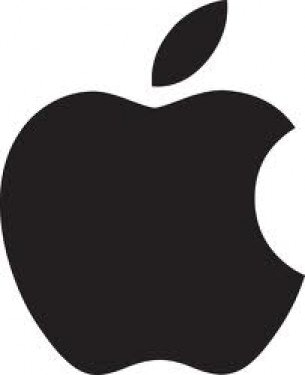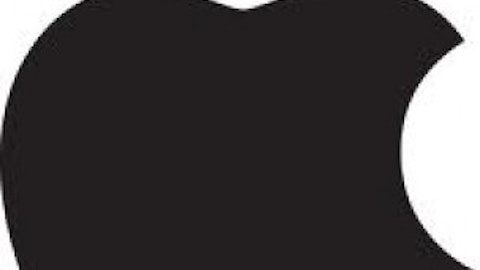The Wall Street Journal has confirmed that Apple Inc. (NASDAQ:AAPL) has begun production on a low-cost iPhone. The budget phone could go on sale as early as next month, and will likely be introduced at Apple’s event on Sept. 10.
The phone is integral to Apple Inc. (NASDAQ:AAPL)’s strategy long-term, but questions still remain. Specifically, how cheap will the phone actually be? And will it cannibalize sales of the more expensive iPhone?
“Low-cost” is a relative term
While the low-cost iPhone is sure to be less expensive than the premium model, its exact price point is quite crucial to its impact on Apple Inc. (NASDAQ:AAPL)’s business.

If the point of the phone is to appeal to emerging market consumers, which some reports have indicated in the past, then any price over $100 could be far too expensive.
Apple Inc. (NASDAQ:AAPL)’s chief rival in the space, Samsung, is a major player in the emerging market. But the phones it sells into these markets, like its REX series released earlier this year, cost $50-100 per phone — a fraction of the price it charges for its more expensive Galaxy handsets.
And the Galaxy phones are where Samsung makes its money. By some estimates, it sells its cheaper phones into emerging markets near-cost — selling into these countries just to establish market share.
Samsung shares moved lower after the company reported earnings last month. Samsung’s flagship phone, the Galaxy S4, failed to sell as well as analysts had expected. To offset the decline, the company is branching out into other devices (like a smart watch that will likely be unveiled next month), but the fundamental point remains: Cheap phones do not drive profit.
If Apple Inc. (NASDAQ:AAPL) were to introduce a low-cost iPhone at $350-$400, which is what Apple blogger John Gruber expects, it would probably make money off the device, but would not significantly increase its market share.
Sure, the phone would sell — the affluent in these countries buy the iPhone right now — but Google Inc (NASDAQ:GOOG)‘s Android OS, with its far more affordable phones, should continue to dominate these markets.
Color could cannibalize
Apple’s decision to release its iPad Mini was necessary to defend its market share — with Google Inc (NASDAQ:GOOG) and Samsung pushing smaller tablets, the Mini was needed to keep the iPad relevant.
However, it had the net effect of hurting Apple’s gross margins. From a peak of 47% in March 2012, Apple’s gross margin fell to 37% last quarter. CEO Tim Cook admitted back in January that the Mini was cannibalizing some sales of the full-size iPad.
Likewise, a cheaper iPhone (with smaller margins) could cannibalize sales of the more expensive model. At first glance, this might seem unlikely. For a consumer in the developed market with a subsidized contract, $200 for a phone isn’t a lot. But people are superficial, and color matters.
The low-cost iPhone (rumored to be called the iPhone 5C) will reportedly come in a variety of colors. Apple has used this strategy in the past with its Mac computers in the ’90s and its iPod Mini nearly a decade ago.
It isn’t hard to imagine a consumer going for the cheaper iPhone simply because they want the one that comes in blue. Consider the tactic Google Inc (NASDAQ:GOOG) is using to sell the Moto X. The phone is underpowered compared to its rivals, but comes in a variety of different colors. Google hopes that by allowing consumers to customize their phone’s look, they’ll be able to sell more devices.
I would be shocked if it doesn’t work. So far, Google Inc (NASDAQ:GOOG)’s purchase of Motorola has looked like a failure — last quarter, the unit lost Google $342 million and contributed to the search giant missing earnings estimates — but the Moto X should be a winner, and that could bring Motorola back to profitability.
If the Motorola division was to go from being $342 million in the hole to breakeven, it would increase Google Inc (NASDAQ:GOOG)’s earnings by about 10%. Apple’s iPhone 5C could also sell well, but it isn’t clear if that would be to Apple’s benefit. If it cannibalizes the sales of the more expensive iPhone, it will pressure Apple’s margins.
Investing around the budget iPhone
While it seems pretty clear that a budget iPhone is coming, questions still remain. First, how expensive will the phone actually be? Will it be cheap enough to appeal to consumers in the emerging market, or will it strictly serve as a slightly less expensive alternative to the full-cost iPhone?
If it is the former, investors shouldn’t expect the phone to add much to Apple’s bottom line. Rival Samsung sells its budget phones near-cost, with little profit margin. If it is the latter, it could actually hurt Apple’s earnings in the near-term. Cannibalization from consumers eager for a brightly colored iPhone will weigh on Apple’s gross margins.
Either way, investors shouldn’t expect the cheap iPhone to boost Apple’s earnings. While it may make sense longer-term (it could be crucial to defending Apple’s market share), investors shouldn’t expect the budget iPhone to be a short-term catalyst.
The article 2 Key Questions About Apple’s Cheap iPhone originally appeared on Fool.com and is written by Sam Mattera.
Sam Mattera has no position in any stocks mentioned. The Motley Fool recommends Apple and Google. The Motley Fool owns shares of Apple and Google.
Copyright © 1995 – 2013 The Motley Fool, LLC. All rights reserved. The Motley Fool has a disclosure policy.





